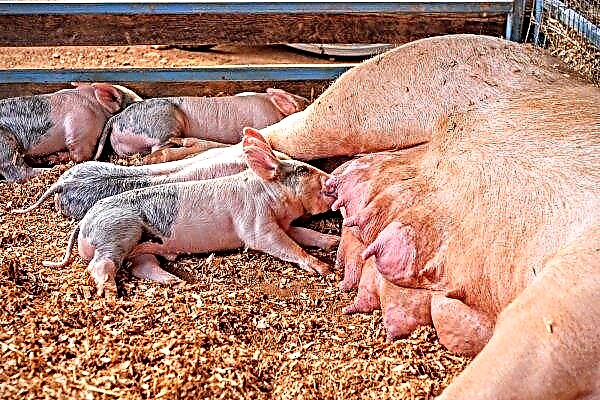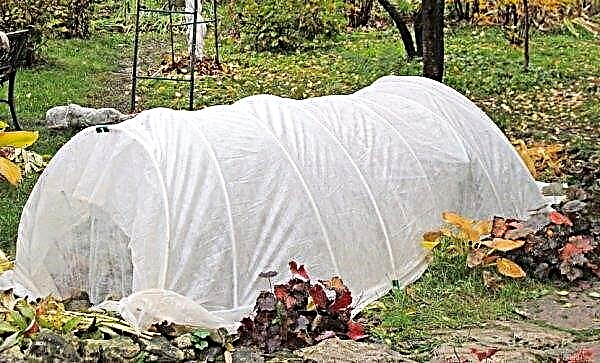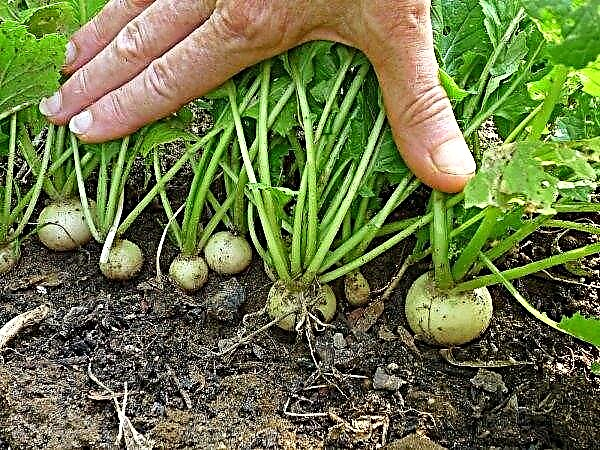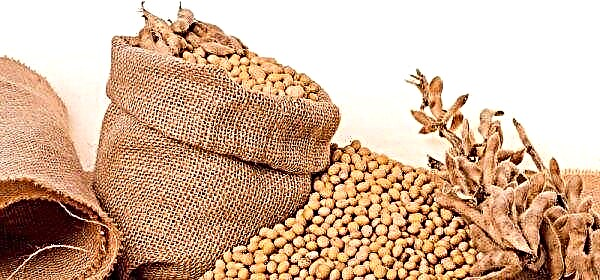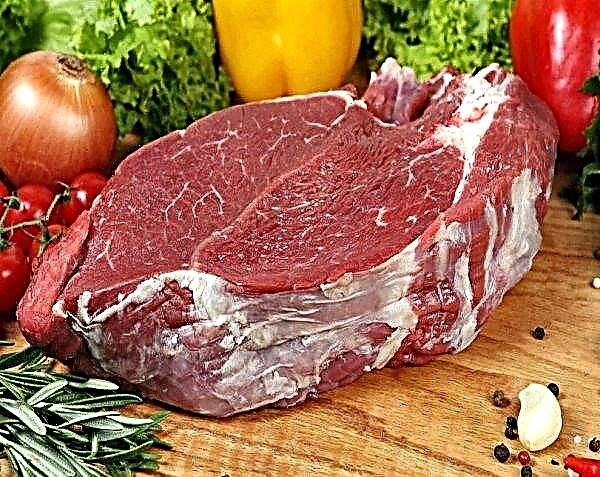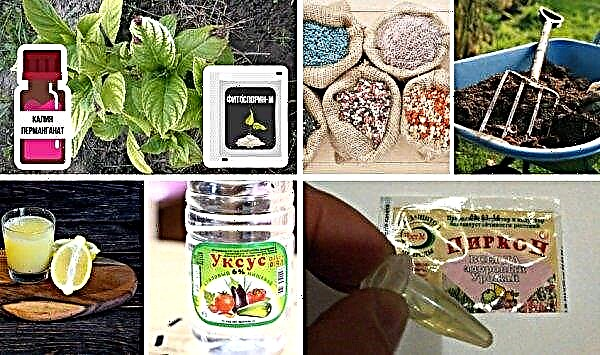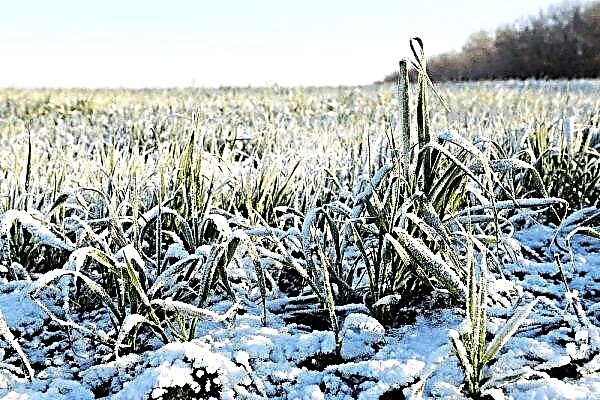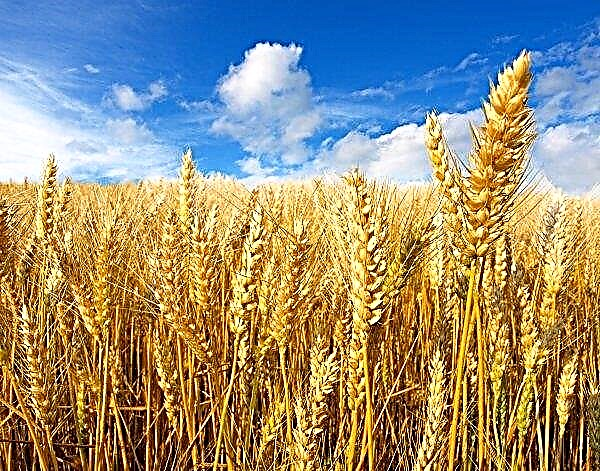Today, about 190 cultural and wild species of honeysuckle are known to exist. Most of them are poisonous. Edible species and varieties can be grown in summer cottages and home gardens in order to produce tasty and healthy berries. We will talk about one of these varieties called Azure in our today's material.
Description honeysuckle varieties Azure
Before deciding on the cultivation of honeysuckle in your garden, you need to familiarize yourself with the description of the plant, find out about its preferences, especially planting, growing and care.
Did you know? Honeysuckle wood is characterized by high strength. Earlier shoe nails and teeth for rakes were made from it.
Selection history
Lazurnaya honeysuckle was obtained at NIISS, located in Barnaul, in 1965. Its authors are Z. Zholobova, I. Kalinina and Z. Luchnik. Excretion occurred by selection of seedlings that appeared as a result of free pollination of Kamchatka honeysuckle varieties Start. Despite the fact that the plant was approved for testing at the state level, it never got into the State Register of the Russian Federation.
Appearance, characteristics of berries, ripening time, yield
In the variety of honeysuckle Lazurnaya, medium-tall bushes grow - they do not exceed 1.7 m. The crown in them has the shape of an inverse cone. The bushes are characterized by medium spreading. The branches are thin, light green in color. The leaves are large in size, oval in shape. There is a slight hairiness on the leaf plates. Berries ripen in mid-June.
The first fruiting occurs in the third or fourth year after planting. The fruits are large, weigh 0.9–1.4 g each. They reach a length of 1.5–2 cm. They are oval, conical, elongated in shape. The top of the berries is pointed. The skin is of medium density. It is painted in dark blue with a bluish tinge. The pulp is characterized by tenderness, sweet and sour taste, blueberry aroma. Taste is high, rated by tasters at 4.5–4.6 points out of 5 possible.
Important! The taste of honeysuckle berries depends on the variety, weather conditions and the availability of moisture during the formation of the fruits.
Honeysuckle berries are useful for the human body because they contain sugar (3% of the daily intake for humans), vitamin C (33%), B1 (200%), B2 (166%), K (66%). Fruits can be eaten fresh, made from them jelly, compotes, juices, preserves, wine. The productivity of mature bushes of the Siberian variety Lazurnaya was noted at 2.3 kg per bush or 7 t / 1 ha. Young specimens bring up to 1.5 kg of berries. The variety is characterized by a high level of frost resistance, prefers plentiful watering, partially self-pollinates. The lifespan and fruiting of honeysuckle is about 20 years.
Advantages and disadvantages of the variety
- According to gardeners who have experience in the cultivation of Honeysuckle Lazurnaya, among its positive characteristics are the following:
- large-fruited;
- high taste qualities of berries;
- winter hardiness;
- strong immunity;
- partial autonomy;
- unwillingness of berries to shedding.
The minuses include the low level of productivity at an early age.
Agricultural technology
The success of honeysuckle growing depends on the selection of a suitable place for planting, the choice of a quality seedling and regular maintenance.
Seat selection
Honeysuckle prefers well-lit areas. When planted in the shade, it gives acidic and small fruits in small quantities. The place should be well protected from drafts. The optimal placement of honeysuckle bushes is near the fence. The permitted depth of groundwater is 1.5 m. It is important that moisture stagnation is not observed on the site, otherwise the plants will hurt and grow poorly.
Important! Sandy and swampy soils are not suitable for growing honeysuckle.
If there is no other way out, such as landing at the place where the water stagnates, then it is necessary to organize a good drainage that removes excess fluid. Honeysuckle grows best and bears fruit in light, fertilized loamy or loamy soils with a slightly acidic or neutral reaction.
Landing and care
In addition to a successful choice of location, you should also choose high-quality planting material. After him, you should go to a specialized store or nursery. Usually annual seedlings or rooted cuttings are sold. When buying, you should give preference to specimens not higher than 1.5 m, with a well-developed root system, a healthy root neck without growths and spots. Planting can be carried out in spring - in mid-April, before the start of the growing season, and in autumn - on the tenth of October. When spring planting, it is recommended to prepare the site since the fall. It must be cleaned of plant debris, dug deep, leveled. Pits can be dug 1.5–2 weeks before planting. The recommended hole size is 40 × 40 × 40 cm. The distance between them is 1.5–2 m, between the rows - 2-3 m. Humus or decomposed manure (10–12 kg), double superphosphate must be added to each pit. g), potassium sulfate (30 g), wood ash (300 g).
When spring planting, it is recommended to prepare the site since the fall. It must be cleaned of plant debris, dug deep, leveled. Pits can be dug 1.5–2 weeks before planting. The recommended hole size is 40 × 40 × 40 cm. The distance between them is 1.5–2 m, between the rows - 2-3 m. Humus or decomposed manure (10–12 kg), double superphosphate must be added to each pit. g), potassium sulfate (30 g), wood ash (300 g).
Planting a seedling must be carried out as follows:
- Fill the pit for 2/3 with fertilized soil, forming a small hill from it.
- Set a seedling on it. The root neck should be located 5 cm below the edge of the pit.
- Spread the root system, evenly distributing it on the ground.
- Fill the soil with voids.
- Tamp up.
- Moisturize by spending 10 liters of water.
- Pour a layer of mulch from the ground, peat, humus.
 In the future, honeysuckle needs regular care: watering, feeding, loosening, weeding, mulching, pruning, preventive spraying against diseases and harmful insects. Watering the bushes should be 1-2 times a week. The number and intensity of irrigation should be coordinated with weather conditions: in rainy periods to reduce, in dry periods - to increase. One adult bush requires 10 liters of water. Humidification should be done in the morning or in the evening, when there is no longer the aggressive influence of the sun. Watering should be combined with cultivations.
In the future, honeysuckle needs regular care: watering, feeding, loosening, weeding, mulching, pruning, preventive spraying against diseases and harmful insects. Watering the bushes should be 1-2 times a week. The number and intensity of irrigation should be coordinated with weather conditions: in rainy periods to reduce, in dry periods - to increase. One adult bush requires 10 liters of water. Humidification should be done in the morning or in the evening, when there is no longer the aggressive influence of the sun. Watering should be combined with cultivations.This procedure prevents the formation of a hard crust on the surface of the earth, which prevents the penetration of moisture and oxygen to the rhizome. It must be carried out carefully, since the roots of the honeysuckle are located close to the surface of the earth. Regular weeding is also needed. Weed herbs should be removed with the root. To reduce the number of watering, loosening and weeding allows mulching. A layer of straw, mowed grass, peat, sawdust, humus (3-4 cm high) is laid in the near-trunk zone and in the aisles.
Important! Unlike most other trees and shrubs, honeysuckle does not need pruning when planting. This procedure leads to stunted growth and development.
Thanks to it, the desired level of moisture in the soil is preserved, weed growth is slowed down. Honeysuckle need to be fed in spring and autumn. As the first top dressing, nitrogen-containing fertilizers or complex mixtures are used. In autumn, the plant needs phosphorus and potassium complexes, as well as wood ash. For digging make superphosphate (30 g / 1 m²) with potassium salt (20 g / 1 m²). Every 3-4 years, it is advisable to fertilize with organic fertilizers - humus, rotted compost.
Pollination Features
Grade Azure is self-fertile by 27%. To achieve the maximum level of productivity, it is necessary to plant 2-3 varieties in the immediate vicinity that are able to pollinate it. Good pollinators are the varieties Cinderella, Bluebird, Long-fruited, Julia, Blue spindle, Gerda.
Pest and Disease Control
Azure honeysuckle well resists diseases and harmful insects. With proper planting and regular care, the risk of developing diseases is significantly reduced. If on the street for a long time adverse weather conditions, in particular, high humidity, are observed, then powdery mildew can affect the bushes.
In this case, the leaves are covered with a white coating, similar to flour. For the prevention of fungal disease, it is necessary to spray with the preparations “Fitosporin”, “Alirin”, copper sulfate, soda solution, and whey.
Of the pests, a danger to the plant can be:
- Leafloader. This insect leads to leaf wrapping. In order not to let him into the garden, it is necessary to carry out preventive treatments with Biotlin, Bitoxibacillin, Aktara, Fufanon.
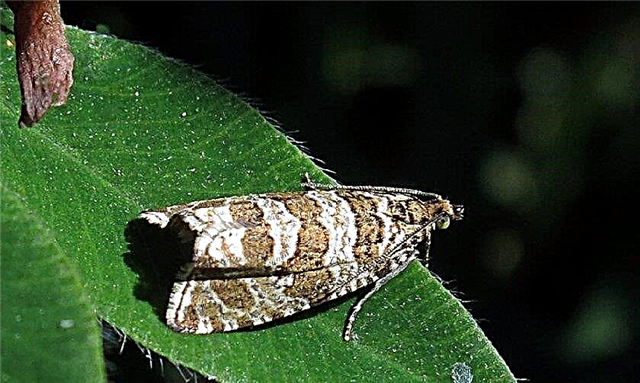
- Honeysuckle fingerwing. Fingerfly itself does not harm honeysuckle. The danger for her is the caterpillars that spoil the fruits. The berries become dark, wrinkled and quickly fall off. The productivity of shrubs is significantly reduced. The fight against the fingerfly is “Chlorofos”, infusions of potato or tomato tops, means “Inta-vir”.
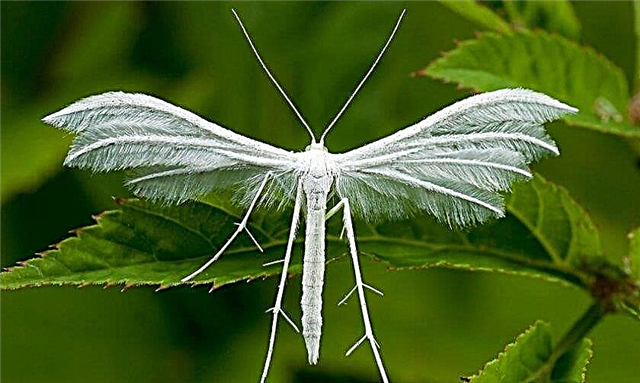
- Aphid. This pest settles under the lower leaf plate and drinks the juice of the plant, significantly weakening it and even leading to death. Symptoms of infection are pale leaves, small yellow and brown spots on them. Folk methods are used against aphids - spraying with a solution of soda, soap, chamomile, ash, calendula infusions. With severe infection, they resort to the use of "Entobacterin", "Biotlin", "Fitoverm", "Confidor", "Actellika", "Inta-vira".
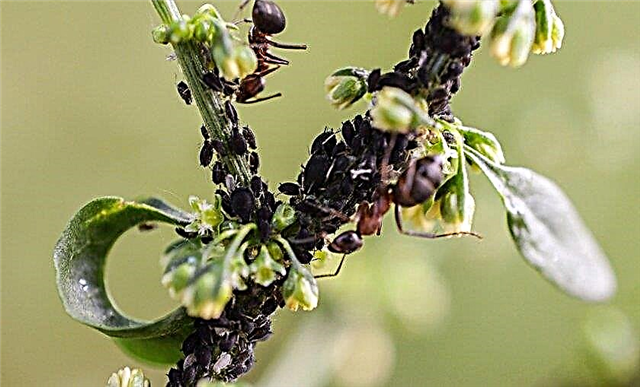
- Shield. It is a small insect, the body of which is covered with a shell. It sucks the juice from the trunk and shoots of the bush. As a result, plants stop growing, wither, their leaves turn yellow, dry out and fall off. Fruits are covered with yellow and brown spots. If the scabs are few, then they are mechanically cleaned, the shoots and the trunk are wiped with a soap-alcohol solution (20 ml of denatured alcohol, 30 ml of liquid soap, 2 l of warm water). In case of a massive defeat, they are treated with Admiral, Aktara, and Aktellik.

- Honeysuckle tick. The pest drinks juices from plants. As a result of its harmful activity, the leaves curl. They struggle with the tick “Actellik”, “Omayt”, “Confidor”.
Cropping and shaping the crown
Honeysuckle is trimmed 2 times a year - in spring and autumn. In the spring, it must be done before the start of the growing season. At this time, sick, deformed, damaged, dry, branches growing inside the crown are cut out. In autumn, cut off prolific branches that are 5 years old, as well as those that lead to thickening of the crown. Pruning is done with a sharp garden tool, previously disinfected. In order to avoid the development of diseases and the appearance of harmful insects, the places of cuts are treated with copper sulfate and glossed over with garden var or RanNet.
Pruning is done with a sharp garden tool, previously disinfected. In order to avoid the development of diseases and the appearance of harmful insects, the places of cuts are treated with copper sulfate and glossed over with garden var or RanNet.
Wintering
Preparation for wintering begins with pruning. Then the area is cleaned of plant residues and fed with potash and phosphorus fertilizers. Since Azure honeysuckle has a high level of frost resistance, it does not need serious shelter. If necessary, you can cover it with spruce branches, agrofibre or cover it with snow.
Video: preparing honeysuckle for winter
Harvesting and transportation of the crop, shelf life of berries
The duration of fruiting honeysuckle is 3-4 weeks. Harvesting should begin when the fruits have gained the declared mass in the description, have acquired a blue color and become sweet. Tear off the honeysuckle by hand, separating it from the stalks and carefully placing it in small containers to avoid creasing. Some gardeners prefer to shake it on a fabric, burlap, pre-lined under a bush.
Did you know? The aroma of honeysuckle is actively used to create elite perfume compositions. Perfumes with a touch of this plant are presented in the collections of such cult brands as Givenchy (Organza), Chanel (Allure), Burberry (London), Britney Spears (Believe), Cartier (De Lune), Nina Ricci (L`Air), Estée Lauder (Modern Muse) and others.
Berries are stored in the refrigerator for only 5 days. To save them longer, it is better to resort to freezing. Then healthy fruits can be consumed throughout the winter and spring. Fruits are poorly transported. Transportation is possible if they are immediately cooled after collection. So, the mid-season edible variety of honeysuckle Lazurnaya can be grown in summer cottages and household plots. It does not require much effort and time to care, rarely gets sick, and with regular care gives tasty and healthy berries that can be used for universal purposes.
So, the mid-season edible variety of honeysuckle Lazurnaya can be grown in summer cottages and household plots. It does not require much effort and time to care, rarely gets sick, and with regular care gives tasty and healthy berries that can be used for universal purposes.
Reviews
Azure honeysuckle is a Siberian variety. Fruits are elongated oval in shape with a slightly elongated tip, up to 2 cm long and weighing up to 0.7 grams. The taste is sweet, the flesh is tender. Productivity up to 0.5 kg per bush. Shedding is not. The bush is tall up to 1.8 meters, medium thickened with a reverse conical crown. The leaves are light green, elongated oval. For dessert use.





